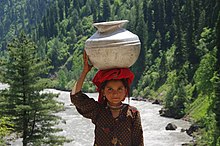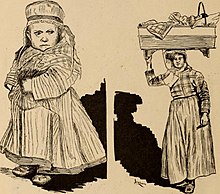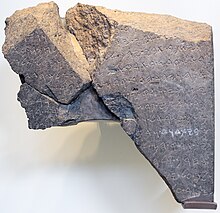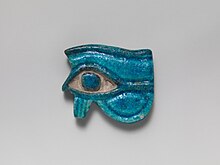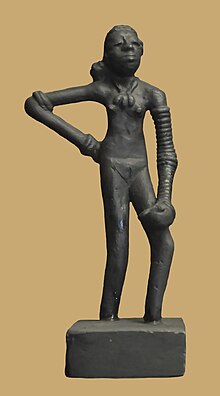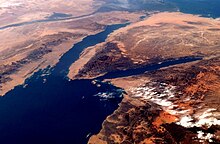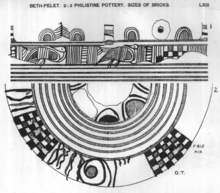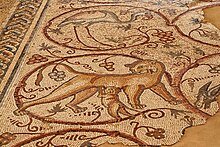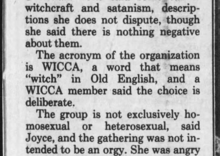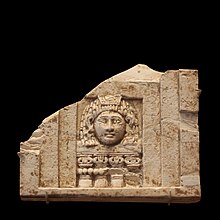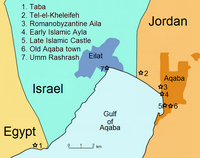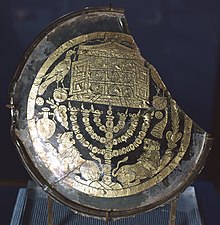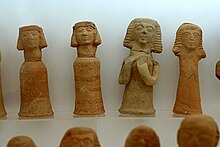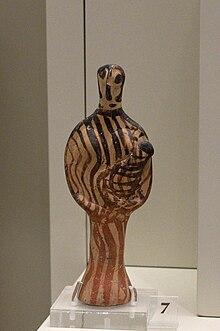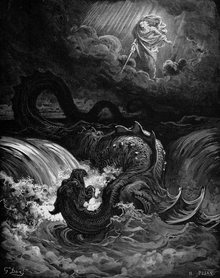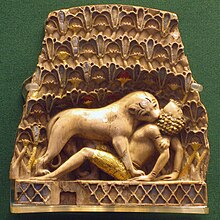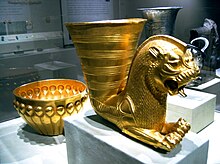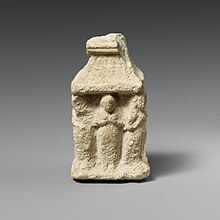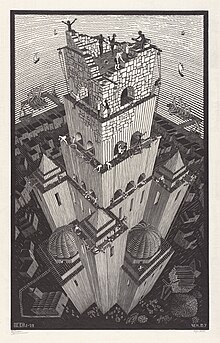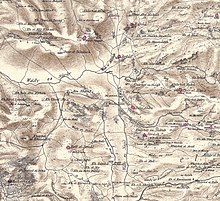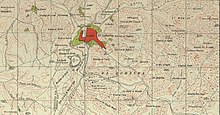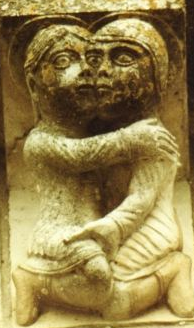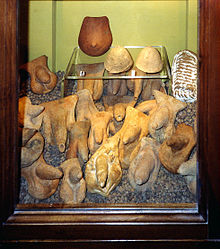The
heart scarab is an oval
scarab artifact dating from
ancient Egypt. Mostly an
amulet, it was also used as jewelry, a memorializing artifact, or a
grave good. The heart scarab was used by referring to Chapter 30 from the
Book of the Dead and the
weighing of the heart, being balanced by
Maat, goddess of truth, justice, order, wisdom, and cosmic balance. The function of the heart scarab was to bind the heart to silence while it was being weighed in the underworld to ensure that the heart did not bear
false witness against the deceased.
[7] As in many current religions, the individual had to show 'worthiness' to achieve the
afterlife. The heart was extremely important to ancient Egyptians as the seat of intelligence and the storehouse of memory. It was the only organ left in place during mummification. Heart scarab amulets were meant as substitutes for the heart should the deceased be deprived of the organ in the afterlife.
[7] For example, when a person died, a heart scarab was often placed on their heart and bound underneath the bandages of the mummy. This was to ensure that it could not be physically removed from their person.
[8]









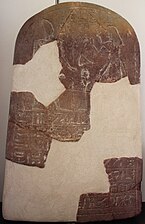






![Jews believe the sacrifice of Isaac didn't happen on "Mount Moriah". It is believed by the Samaritans that the sacrifice actually didn't take place on Mount Gerizim, near Nablus in the West Bank.[3]](https://upload.wikimedia.org/wikipedia/commons/thumb/9/9b/%D7%A9%D7%9B%D7%9D_%D7%9C%D7%99%D7%93_%D7%94%D7%A8_%D7%92%D7%A8%D7%99%D7%96%D7%99%D7%9D_%D7%A6%D7%99%D7%9C%D7%95%D7%9D-_%D7%9C%D7%99%D7%90%D7%95_%D7%A7%D7%90%D7%94%D7%9F_1912_-_i_%D7%95%D7%92%D7%A0%D7%A8i_btm782.jpeg/274px-%D7%A9%D7%9B%D7%9D_%D7%9C%D7%99%D7%93_%D7%94%D7%A8_%D7%92%D7%A8%D7%99%D7%96%D7%99%D7%9D_%D7%A6%D7%99%D7%9C%D7%95%D7%9D-_%D7%9C%D7%99%D7%90%D7%95_%D7%A7%D7%90%D7%94%D7%9F_1912_-_i_%D7%95%D7%92%D7%A0%D7%A8i_btm782.jpeg)
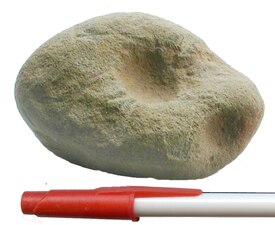




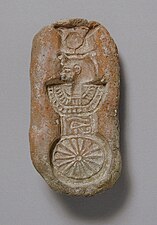
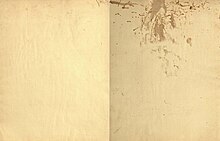


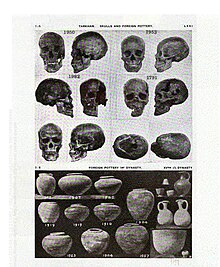
![The sellers were trying to sell the $42 million painting for only $100,000 after being unable to sell it for five years.[1]](https://upload.wikimedia.org/wikipedia/commons/thumb/3/37/Young_Parisian_%28Auguste_Renoir%29_-_Nationalmuseum_-_18761.tif/lossy-page1-96px-Young_Parisian_%28Auguste_Renoir%29_-_Nationalmuseum_-_18761.tif.jpg)
![Death and preservation of head Petrie's headstone in the Protestant Cemetery, Jerusalem (2009) Sir Flinders Petrie died in Jerusalem on 28 July 1942. His body was interred in the Protestant Cemetery on Mount Zion, but he donated his head (and thus his brain) to the Royal College of Surgeons of London. World War II was then at its height, and the head was delayed in transit. After being stored in a jar in the college basement, its label fell off and no one knew to whom the head belonged.[1]](https://upload.wikimedia.org/wikipedia/commons/thumb/f/f6/Petrie-at-Abydos-19221-965x543.jpg/120px-Petrie-at-Abydos-19221-965x543.jpg)

![Fake. As more than one commentator has noted: "We are never more likely to be vulnerable to a cheat than when we ourselves are trying to diddle someone out of a masterpiece."[31]](https://upload.wikimedia.org/wikipedia/commons/thumb/d/d1/Smiling_girl_%28Fake_Vermeer%29.jpg/92px-Smiling_girl_%28Fake_Vermeer%29.jpg)
![Fake. Wilhelm von Bode, the general manager of the Prussian Art Collections for the Berlin Museum, spotted the bust in a London gallery and purchased it for a few pounds for the Kaiser Friedrich Museum in 1909. Bode was convinced that the bust was by Leonardo da Vinci and the Berlin Museum authorities, and the German public, were delighted to have "snatched a great art treasure from under the very noses" of the British art world.[2]](https://upload.wikimedia.org/wikipedia/commons/thumb/9/9e/Bust_of_Flora_by_Richard_Cockle_Lucas_%281800-1883%29%2C_wax_-_Bode-Museum_-_DSC02998.JPG/84px-Bust_of_Flora_by_Richard_Cockle_Lucas_%281800-1883%29%2C_wax_-_Bode-Museum_-_DSC02998.JPG)


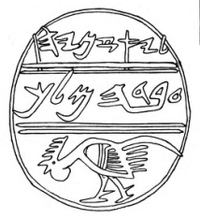


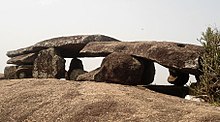

![Steiner, Richard C. (2001). "The Scorpion Spell from Wadi Hammamat: Another Aramaic Text in Demotic Script". Journal of Near Eastern Studies. 60 (4): 259–268. doi:10.1086/468948. ISSN 0022-2968. [2] [3] great ref for: Kaf](https://upload.wikimedia.org/wikipedia/commons/thumb/0/08/Mosaic_in_Maltezana_at_Analipsi%2C_Astypalaia%2C_5th_c_AD%2C_Scorpio_Astm30.jpg/120px-Mosaic_in_Maltezana_at_Analipsi%2C_Astypalaia%2C_5th_c_AD%2C_Scorpio_Astm30.jpg)


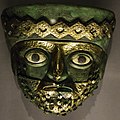











![Approximately 500 pieces of Cypriot pottery, containing oil and perfume, were discovered at Tell el-Dab’a. Pendent Line, Cross Line, and White Painted V styles of White Painted Cypriot pottery compose the largest component of exported pottery to Tell el-Dab’a, indicating that Tell el-Dab’a had trade relations with Cyprus.[4] The majority of the exported pieces were of the “broad band” tradition.[4] A single rim fragment from a jar of the White Painted V Fine Line Style was found at the site.[4]](https://upload.wikimedia.org/wikipedia/commons/thumb/c/cf/Painting_of_foreign_delegation_in_the_tomb_of_Khnumhotep_II_circa_1900_BCE_%28Detail_mentioning_%22Abisha_the_Hyksos%22_in_hieroglyphs%29.jpg/108px-Painting_of_foreign_delegation_in_the_tomb_of_Khnumhotep_II_circa_1900_BCE_%28Detail_mentioning_%22Abisha_the_Hyksos%22_in_hieroglyphs%29.jpg)





















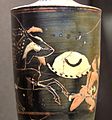

![The heart scarab is an oval scarab artifact dating from ancient Egypt. Mostly an amulet, it was also used as jewelry, a memorializing artifact, or a grave good. The heart scarab was used by referring to Chapter 30 from the Book of the Dead and the weighing of the heart, being balanced by Maat, goddess of truth, justice, order, wisdom, and cosmic balance. The function of the heart scarab was to bind the heart to silence while it was being weighed in the underworld to ensure that the heart did not bear false witness against the deceased.[7] As in many current religions, the individual had to show 'worthiness' to achieve the afterlife. The heart was extremely important to ancient Egyptians as the seat of intelligence and the storehouse of memory. It was the only organ left in place during mummification. Heart scarab amulets were meant as substitutes for the heart should the deceased be deprived of the organ in the afterlife.[7] For example, when a person died, a heart scarab was often placed on their heart and bound underneath the bandages of the mummy. This was to ensure that it could not be physically removed from their person.[8]](https://upload.wikimedia.org/wikipedia/commons/thumb/3/36/WLA_brooklynmuseum_Heart_Scarab_of_the_Divine_Father_Hori.jpg/102px-WLA_brooklynmuseum_Heart_Scarab_of_the_Divine_Father_Hori.jpg)
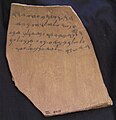
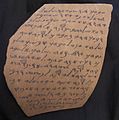



![Samos Etymology: Strabo derived the name from the Phoenician word sama meaning "high".[6][7][8]](https://upload.wikimedia.org/wikipedia/commons/thumb/5/58/Kokkari_Sea_Beach.JPG/120px-Kokkari_Sea_Beach.JPG)

![A. J. van Windekens,[8] offers "young cow, heifer", which is consonant with Hera's common epithet βοῶπις (boōpis, "cow-eyed").](https://upload.wikimedia.org/wikipedia/commons/thumb/7/76/Hera_Campana_Louvre_Ma2283.jpg/66px-Hera_Campana_Louvre_Ma2283.jpg)
![Possible depiction of the Sun goddess of Arinna. In an effort to harmonize the dynastic pantheon of the Hittite kings, which was influenced by Hurrian religion, with the state pantheon consisting of Hattic and Hittite deities, attempts were made to syncretise Ḫepat and the Sun goddess of Arinna.[9] The best known source attesting it is a prayer of queen Puduḫepa, the wife of Ḫattušili III:](https://upload.wikimedia.org/wikipedia/commons/thumb/7/7a/HittiteGoddessAndChildAnatolia15th-13thCenturyBCE.jpg/90px-HittiteGoddessAndChildAnatolia15th-13thCenturyBCE.jpg)








![The suckling motif was common in Third Semitic Pottery[citation needed]](https://upload.wikimedia.org/wikipedia/commons/thumb/3/35/Thirdsemitic.png/120px-Thirdsemitic.png)







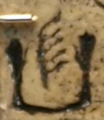









![The core myth at the heart of the cult of Heraion of Samos is that of her birth. According to the local tradition, the goddess was born under a lygos tree (Vitex agnus-castus, the "chaste-tree"). At the annual Samian festival called the Toneia, the "binding", the cult image of Hera was ceremonially bound with lygos branches, before being carried down to the sea to be washed. The tree still featured on the coinage of Samos in Roman times and Pausanias mentions that the tree still stood in the sanctuary.[4]](https://upload.wikimedia.org/wikipedia/commons/thumb/1/10/Heraion_of_Samos_2.jpg/120px-Heraion_of_Samos_2.jpg)













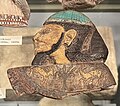




















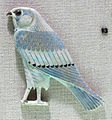









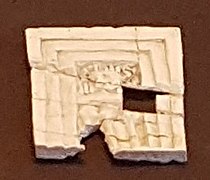
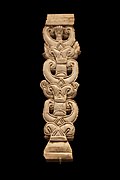



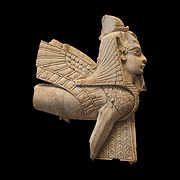

![[10]](https://upload.wikimedia.org/wikipedia/commons/thumb/b/bf/Ivory_plaque-AO_11453-IMG_0701-black.jpg/270px-Ivory_plaque-AO_11453-IMG_0701-black.jpg)














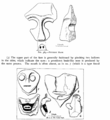






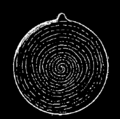







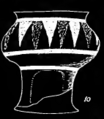





















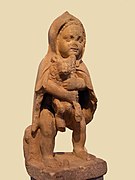


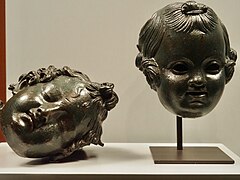




















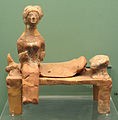


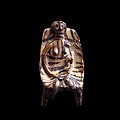








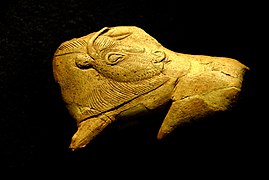



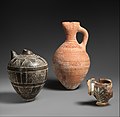


![Julius Wellhausen in deriving the name YHWH from Arab hwh “he blows, he falls” (1981, 25 note 1; see also Knauf 1984, 1988, 43–50), [13]](https://upload.wikimedia.org/wikipedia/commons/thumb/8/82/Mynoan_bull%27s_head_rhyton%2C_clay%2C_Prinias%2C_2000-1425_BC%2C_AM_Ag._Nikolaos%2C_0501234.jpg/120px-Mynoan_bull%27s_head_rhyton%2C_clay%2C_Prinias%2C_2000-1425_BC%2C_AM_Ag._Nikolaos%2C_0501234.jpg)












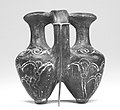








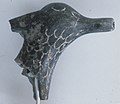


























!["Household god" by R A Stewart Macalister in Gezer.[14]](https://upload.wikimedia.org/wikipedia/commons/thumb/6/6b/Teraphimandtongueofgold1.png/76px-Teraphimandtongueofgold1.png)


